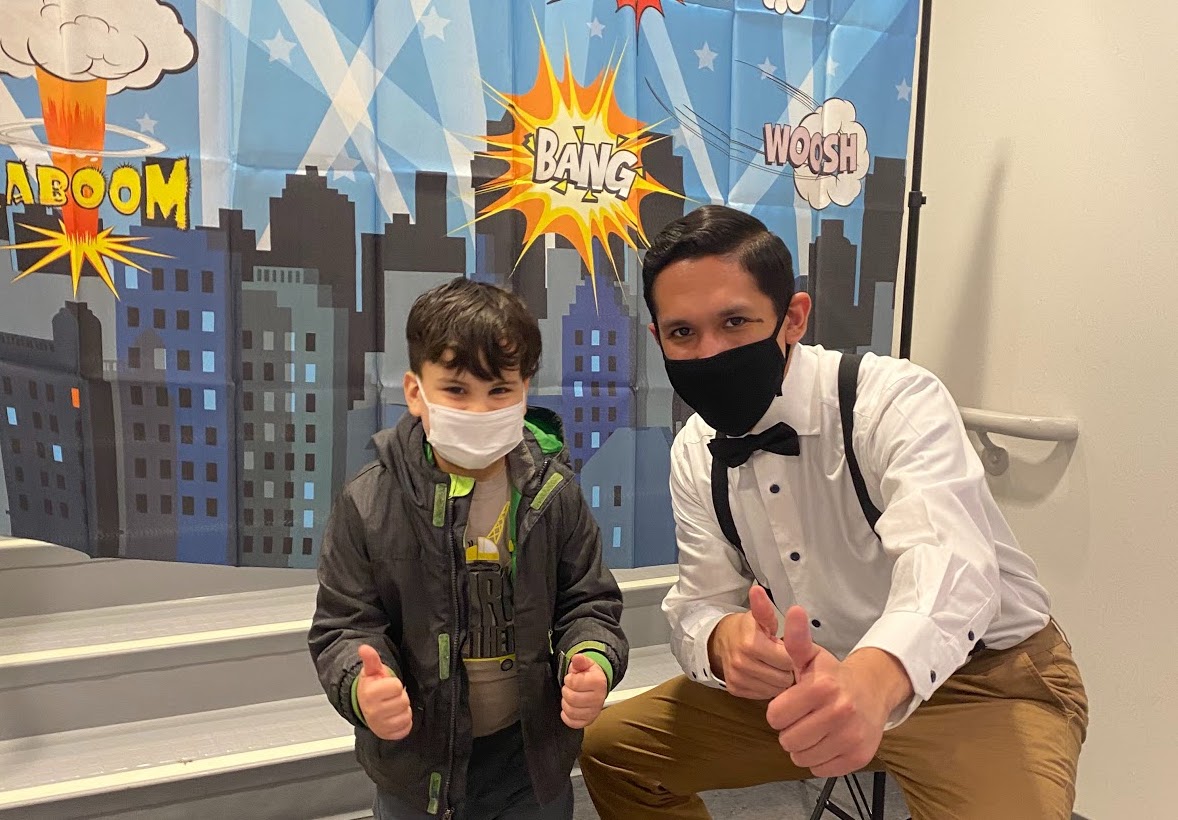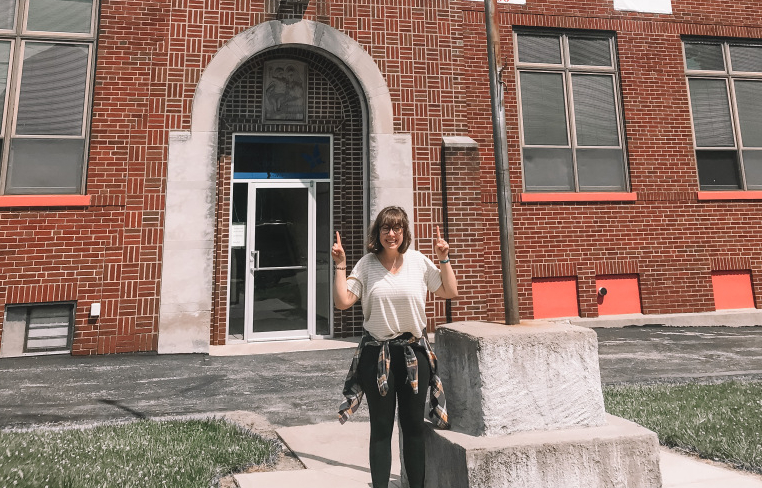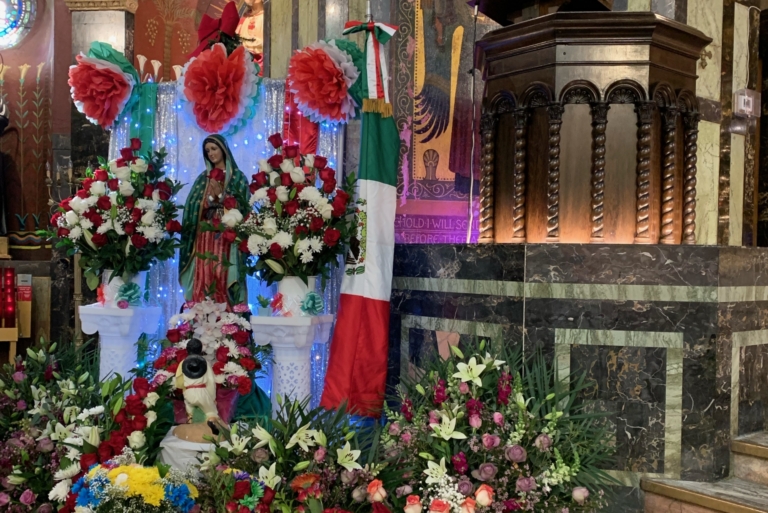By Nico Silva – Cohort 7
THE CALL
Anyone who knew me at Thomas Aquinas College could tell you that I was ready to go to law school after college. After dozens of practice tests, two LSATs under my belt, and so many applications, how could I do anything other than what I had invested so much time and treasure into already? And yet… something didn’t sit right with me about law school. To this day, I am not quite sure I have given up on it, but as the year was winding down in February of 2020 I was filled with so much love for all that I had learned about the Faith and Creation in general. I was so eager to share my love of all those transcendental truths with the world and feeling strange about going “back to school” so soon. I began to wonder if sitting in classrooms for another three years learning about law and court precedent was where the Holy Spirit was calling me at that time. Why did I have such a strong desire to share what I had learned about God? Why did I have such a burning desire to continue the spiritual works of mercy I began at TAC with the Legion of Mary and the door-to-door evangelization we did? Why was I so intent on spending my time helping people encounter God through the kind of beauty I cultivated with my TAC friends in the Floriani Men’s Choir?
I was approached by Bella Gadapee one day in the Commons and given the “Seton pitch.” Let us fly you to New York City for free and show you about this incredible missionary opportunity in the Big Apple. A part of me accepted for the free trip, another part of me was curious if the Lord needed more workers for a plentiful harvest. In either case, the details I got upfront were scant. I was told I needed “to see it for myself.” In only a few weeks, I was on my way for an interview over two days in New York. What I saw there transformed my plans for the rest of the year. I was happily introduced to the Brilla-Seton model: a response to closures of Catholic schools in some of the most economically underserved communities in New York. Rather than give up on Catholic education, closed schools were turned into high-quality “Brilla” public charter schools where Catholic missionary teachers from across the country would be integrated as critical players in the classroom during a day of secular instruction crafted around classical principles of truth, beauty, and goodness. We are called the Seton Teaching Fellows, and one could say we are the special ingredient that keeps the love of Christ and mission-spirit alive even at a public school. However, it was not this opportunity to teach in a public school alone that called me into the Bronx, it was also the unique partnership between El Camino, Seton’s flagship Catholic faith formation program, and Brilla public charter schools that changed everything for me.
After a day of being a witness for Christ in a public school, the Seton Teaching Fellow is entrusted with an El Camino class. El Camino, is a distinct and optional after school program for students who attend Brilla during the day. The Fellow is charged with forming their souls in a dynamic and exciting catechism class. The program is remarkable and I had the privilege of seeing it in person: as the clock ticked past the end of the school day, literal curtains were lifted by Seton Teaching Fellows revealing boxes filled with supplies for El Camino. Crucifixes and altars with candles were set up in the same places children had only moments ago learned about wisdom and truth. Beautiful icons of the Saints were set up or projected on the very walls where bright Brilla decals spoke of beauty. The students (now called “Disciples”) were seamlessly transitioned from their secular instruction into that pinnacle of their education: the knowledge of their Creator. I was fascinated by the catechetical curriculum which seemed so different from the religious education I had received from even my own Catholic elementary school, and in many ways it was a lot better! But was it “fitting” for an advanced theology student to take on teaching kids “the basics?” This I often wondered. But then God gave me the answer.
I’ve told this story so many times but I’ll tell it again.
On the second day of interviews, I woke up with the urge to prayerfully ponder the scriptures for the mass of that day. To my surprise it was a familiar scene, the apostles jockeying about who was going to be the greatest in the Kingdom of Heaven. Jesus, partly displeased, partly amused (I can only imagine), takes a nearby child and places him in their midst. Then Christ utters the words that changed my destiny for the foreseeable future: “Truly, I say to you, unless you turn and become like children, you will never enter the kingdom of heaven. Whoever humbles himself like this child, he is the greatest in the kingdom of heaven. Whoever receives one such child in my name receives me.” That day as I peeked into classrooms, touring the campus I might very well serve in, I saw faces of children laughing, struggling over difficult math problems, singing along to the words of diligent teachers. I got to teach a demo lesson on Lent and found my inner Mr. Nieto coming out when I explained the etymology of the word “sacrifice.” I saw the kids performing the activity I had devised to explain how to “make something holy” and watched them put sticky notes with their Lenten promises into a random box I brought with me. “There you go, guys! We just “set apart” something for God. When we make a sacrifice, we’re not giving something up, but rather we are giving something to someone. We are telling God, ‘I set this apart for you as a gift, it’s yours. It belongs to you for these 40 days and maybe more!’” I saw a light click in their heads. Faces that had previously seemed a little hesitant to name a sacrifice that would pain them very much to make, now seemed prepared to show God now how much they loved Him by giving Him their prized possessions and time-consumers.
The eagerness of those children to show God how much they loved convicted my heart in that moment. Have I given up anything difficult to God lately? My mind turned to the prized legal career I had been eyeing for some time, all the money I’d invested thus far in it, all the expectations people had for me to pursue it as soon as possible. And then there were those kids, ready to give up their Playstations and even precious basketball time at the drop of a hat because their child-like Faith didn’t flinch like my grown-up Faith did. I thought of the neighborhood I was in—Mott Haven—situated right in the poorest congressional district in the United States. I saw how much this school was helping them spiritually and academically. I saw how it could transform their lives. I felt ashamed that after so much time given to God and my neighbor at TAC, I hadn’t considered all the ways God might want to use my talents in the world after graduation. I only thought about a professional career and what I would enjoy doing. I thought little about what God wanted me to do.
When I got back, I thought about that verse of Scripture. “The greatest in heaven” would be someone who “received a child” in Christ’s name. It would be a childlike person who believed with the heart of a child. I thought about how those kids in the Bronx made me think with their own childlike faith for such a brief moment. In my Sts. Peter and Paul dorm, I looked upon the box I had, still stuffed with their Lenten sacrifices. I remembered the conversations I had with those young Disciples in my short lesson and remembered how they were hungry for God with so many questions. I thought about how many answers St. Thomas had given me in the Summa. I thought about how rare it is for children from low-income families to have access to a person like me who looks like them, understands their upbringing, was bilingual, and had the treasury of the Church’s philosophical, spiritual, and artistic patrimony ready in his soul on-demand to share.
For the next month, I met with Fr. Marchewski and discerned if this missionary year was God’s will for me. I spent time in the Chapel, in my room, thinking and pondering endlessly about that mass reading, those children, and my talents. My heart was somehow in the Bronx still and that feeling grew stronger as COVID threatened the longevity of that program if they didn’t have the catechists they needed that year to keep transmitting the faith “once delivered to the saints” (Jude 1:3). I said “yes” to the Mission, and prayed my fiat would be like Mary’s.
THE MISSION
God provides and qualifies those He calls. That’s been a constant theme of this Mission since I have said “Yes.” I have been thrown into a classroom environment through a baptism by fire. And when the refiner’s fire of mistakes, missed emails, and hard lessons had molded me enough, the program sent in a small team of coaches and spiritual guides to take my rough edges as an educator and smooth them out more. They filmed me in the classroom, gave me advice, gave me reading, and gave me an ear to vent to. Little by little, I felt myself becoming an effective educator during the day at Brilla and then after school during El Camino catechism.
Initially, I had requested to be a teacher in Brilla’s Middle School. I always saw myself explaining St. Thomas’ proofs for God’s existence to more mature 7th and 8th graders. I pictured having challenging and sublime discussions with those more rational minds and speaking to them in vocabulary that wasn’t too removed from what I learned at TAC after adjustments for their age. I was fairly confident I could handle them, engage them, and passionately use my rhetoric and acting skills to keep their attention.
None of that came to fruition.
The Lord put me in first grade? I was terrified! I wondered whether TAC prepared me for the antics of energetic kids unable to follow my liberally educated orations on the Divine Essence. I was saddened at the thought that these little ones were not old enough to sit still enough to listen to Sicut Cervus with me. So much of what I wanted to share from the depths of my soul was no longer age-appropriate! I braced myself for a year of exhausting behavioral “horse-wrangling” and not being able to connect with the children.
But then I met the children: I wasn’t ready for how adorable their faces would be and the hilarious things that would spill out of their mouths from moment to moment. They had so much life and personality, it was hard not to love even the most rambunctious of them. If anything, the more they struggled to behave and learn in school, the more I loved them, the more I wanted to help them. Quickly those same children saw me as their helper, their advocate, even their father figure. The air-hugs began to increase. My knuckle-touches were coveted. “I wanna have lunch with Mr. Silva!” became a common phrase. The love of children is so pure, so ready, and so trusting. They want an adult who cherishes them and wants to listen to them. I found that TACers can do this particularly well. So many of us possess the kind of soul that can find beauty in the simple things the world passes by without much of a thought. We listen to what the world often prefers to dismiss. There is so much beauty in the milk mustache of a little girl whose innocent smile and joy doesn’t reveal the shelter she returns to each day. What a beauty there is watching children who have trouble sitting still descend into reverence before my prayer altar during catechism becoming models of reverence. There is nothing more sublime than when I heard one of my Disciples cry out in class during a lesson: “God is real! The angels are real! They’re really real! Alleluuuuuia!” Nothing brings me more joy than to hear my students in the hallways tell their friends during: “I love Mr. Silva’s class. That’s where I learn about God!” “Out of the mouth of children and infants You have ordained praise,” as Christ reminds us in the Gospel of Matthew (21:16). There are times where I have to remind myself that the Gospel is simple and the simplicity of children keeps my soul fresh and young when it is old with sin. I see their bright eyes filled with wonder at the smallest things about the faith I take for granted. Suddenly, I am given a new vision and renewed perspective on how precious those things are to the pure of heart.
As I became a better and more confident teacher, my TAC education began to bear fruit for these beautiful children of the Bronx. I used St. Thomas Aquinas’ hymn tunes to make kid-friendly songs for us to sing during prayer. During activities, I realized I could play sacred music for my disciples to “tune their souls” to the Divine as Plato’s Timaeus would put it and dispose them to virtue as Aristotle teaches. The children, who has become accustomed to the worldly sounds and profane lyrics that blast out of cars and stores on the streets of Mott Haven, now ask me: “Mr. Silva, can you play the music with the angels from Heaven?” I found creative ways to engage them like when we reenacted the Battle of Jericho by marching around a “wall” made of chairs surrounding a student that would come crashing down when we “followed God’s instructions” and made a great shout after seven rotations around the “wall!” I invented a game to explain Purgatory where students simulated acts of penance to free their fellow classmates from doing “jumping jacks in Purgatory” for five minutes on timer. When all the kids “got to Heaven” they would have a dance party to celebrate!
At the moment, Mayor de Blasio has returned the city’s public schools to virtual only. I already am heavy with the memory of all the faces of my first graders at Brilla Veritas who won’t be racing after me to try and hug me, calling out my name out of excitement even if it gets them in trouble, and turning to me for help when the going gets tough. I will miss their little masks with their favorite cartoons on them. I will miss their little dance moves in class, their antsy habits, their silly questions, and their unexpectedly proud questions. Over Zoom, something does get lost, but at least my students and I mutually carry the shared memory of the fun we had learning in-person for three months thus far and the relationship we have from that. Who knows when we’ll return to in-person learning again? All I know is that every second of my time here in the Bronx was worth it regardless.
TAC gave me the gift of the first principles of Wisdom. Now, I have the privilege of instilling those first principles as simple seeds into the hearts of my disciples. My students are as diverse as the thousands of people who come from all over the world to settle in New York to call this city home. I do not fear. There’s a beauty to having a mission which doesn’t fling you across the world, but brings the world to you. Moving from California to New York was a culture shock to be sure, but there’s still something so familiar and American about being here, and being here for Christ.
On top of serving these schools, we live in community with the other Seton Teaching Fellows and I cannot help but think that TAC’s tight-knit community life and spiritual-culture prepared me for this aspect of being a Fellow especially. My community brothers and I pray together, have become close friends, and bear each others’ crosses throughout the year as Christ commanded us. To be honest, it’s the community life that makes any challenges (and there are challenges) that arise during our year of mission so much more bearable. “Lord give us joy to balance our affliction,” says David in Psalm 90. And what a joy it has been to endure this year, not alone, but walking with my community of brothers in Christ.
I often talk to Michaela Andrues who is a Kindergarten Seton Teaching Fellow about how in only three months it feels like we’ve been so deep in our mission that TAC feels like ages ago. It’s true! I frequently have to remind myself that I started 2020 as a senior in college. But in a way this year of mission in the Bronx feels like the crown of my spiritual and philosophical formation at TAC. When my BOY (beginning of the year) review was given to me a few weeks back (just think of it as Don Rags with my principal, instructional coach, and site manager), they said three things about me: they loved my joyful presence in the schools, my willingness to take on challenges, and my accuracy in teaching the children. Without a doubt all three of those things are virtues that were cultivated to excellence at TAC until they became parts of my character. I would not be the man I am today for Christ and His children if was not moulded in spiritual wonder and deep wisdom in that little sanctuary in Santa Paula just off Ojai Road. My joy and love for Christ began in TAC’s Christo-centric campus culture. My willingness to take on unknowns and challenges in the school I serve was a result of habitually facing difficult great books and challenging texts from across various disciplines with a trust that diligent, close-reading will illuminate the meaning with time and a good conversation. And my ability to answer my first graders’ colorful and theologically curious questions accurately comes from learning about those concepts with a clarity that allows me to break them down into an age-appropriate form.
TAC exemplified the idea of the Alma Mater, that Latin phrase which literally means “kind, nurturing mother.” I tip the hat to that Mother which formed me for this Mission.



